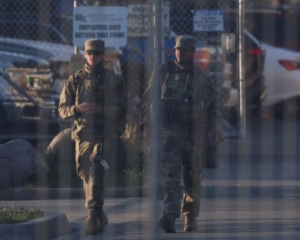In the ongoing conflict between Iran and Israel, one name repeatedly emerges—Amir Ali Hajizadeh. Behind Iran’s powerful missile attacks and increasing precision lies the quiet intelligence of this man. While most of the world overlooked his role, Israel’s spy agency Mossad kept a close watch. Each missile launched by Iran sparked new fears in Israel. One question kept returning—who made Iran’s missiles so accurate and powerful?
The answer was Amir Ali Hajizadeh, the missile architect of Iran. His efforts turned Tehran’s defense into one of the strongest in the region. As Iran’s missiles reached deep into Israeli territory, it became clear that something fundamental had shifted. Israel, once dominant in the region, now faced an opponent with long-range precision weapons. This shift didn’t happen overnight. It was the result of years of dedication, learning, and military vision.
Hajizadeh’s story began during the Iran-Iraq war. At just 19, he fought as a sniper. He took part in major operations like Karbala-4 and Karbala-5. He wasn’t just a fighter; he was a thinker. After the war, he joined Iran’s Revolutionary Guard Aerospace Division. There, he became a student of Hassan Tehrani Moghaddam, the father of Iran’s missile program. Hajizadeh continued Moghaddam’s work and took it even further. He helped build Iran’s missile strength from the ground up using local knowledge and resources.
In 2010, Hajizadeh became the head of the IRGC Aerospace Force. Under his leadership, Iran developed missiles like Sejjil, Khorramshahr, Emad, Fattah-1, Fattah-2, and Khaibar Shekan. These missiles were not just powerful—they were terrifyingly accurate. For Israel, each name became a warning. Each launch shook confidence in their defenses. These weapons made it clear that Iran could strike key locations if needed.
One major moment came when Iran responded to Israeli attacks on Iranian officials and facilities in Syria. Hajizadeh led the “True Promise” missions. Dozens of missiles were fired at Tel Aviv, Haifa, and several Israeli bases. It was a show of strength and skill. The timing and precision were unmatched. It proved that Hajizadeh’s missiles could do more than hit—they could send messages. These weren’t just military actions. They were strategic steps designed to reshape power in the region.
In 2024, the Iranian government gave Hajizadeh its highest military honor, the Order of Faith. But his work went beyond Iran. He helped support resistance groups in places like Gaza, Lebanon, and Yemen. He gave them missile technology. Years ago, they threw stones. Today, they use guided rockets. Hajizadeh saw this as one of his greatest successes. He believed that smart defense could change the balance of power. And it did.
But the same missiles that made him famous also made him a target. On June 13, 2025, an Israeli drone entered Iranian airspace and struck a command center in Tehran. Hajizadeh was killed in that airstrike. The plan was clear and deadly—remove the man who changed the region’s military map. While Israel ended his life, they couldn’t erase what he had built. His systems remain active. His designs continue to guide Iran’s defense. His name still inspires others.
Inside Iran, his death sparked anger and calls for revenge. Many saw him not only as a general or scientist, but as a symbol of resistance. His loss didn’t weaken Iran. It made the nation more determined. Hajizadeh had become more than a person. He was now part of a story—a story about strength, survival, and standing tall in the face of powerful enemies.
Some people call him a general. Others say he was a scientist or a military thinker. But perhaps his final and strongest title is this—he was the man who took away the enemy’s sleep with the speed and precision of his missiles. Hajizadeh didn’t just build weapons. He built fear, strategy, and a new way to resist. His death may have closed a chapter, but the pages he wrote will continue to shape the Middle East for years to come.







